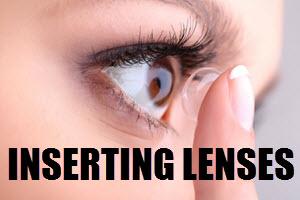Our eyes are intricate organs that provide us with the sense of sight, enabling us to absorb information and appreciate the beauty around us. However, various eye conditions can affect vision and overall eye health. This article sheds light on common eye conditions, their symptoms, and potential treatments.

Refractive Errors
Myopia (Nearsightedness)
Myopia is a common refractive error where distant objects appear blurry while close objects are seen clearly. This condition occurs when the eyeball is too long or the cornea is too curved, causing light rays to focus in front of the retina. Myopia is often corrected with eyeglasses, contact lenses, or refractive surgery.
Hyperopia (Farsightedness)
Hyperopia is the opposite of myopia; individuals can see distant objects clearly but struggle with near vision. This is typically due to a shorter-than-average eyeball or a flat cornea. Like myopia, hyperopia can be corrected with eyeglasses, contact lenses, or surgery.
Astigmatism
Astigmatism occurs when the cornea has an irregular shape, leading to blurry or distorted vision at all distances. Corrective lenses or refractive surgery are the common methods for correcting astigmatism.
Presbyopia
Presbyopia is an age-related condition where the eye’s lens loses elasticity, making it difficult to focus on close objects. Reading glasses or multifocal lenses are common solutions for presbyopia.
Eye Diseases and Conditions
Cataracts
Cataracts are characterized by the clouding of the lens in the eye, which impairs vision. This is usually an age-related condition, but can also result from injuries, medications, or other eye diseases. Treatment for cataracts often involves surgery to replace the cloudy lens with an artificial one.
Glaucoma
Glaucoma is a group of eye conditions that damage the optic nerve, which is vital for good vision. This damage is often caused by an abnormally high pressure in the eye. Glaucoma is one of the leading causes of blindness in older adults. Early detection and treatment, often with prescription eye drops, can help prevent severe vision loss.
Age-Related Macular Degeneration (AMD)
AMD affects the macula, the part of the eye that allows you to see fine detail. It is a leading cause of vision loss among people over the age of 50. There are two types: dry AMD (more common) and wet AMD. There is no cure for dry AMD, but wet AMD can be treated with medication injections, laser therapy, or photodynamic therapy.
Diabetic Retinopathy
This condition affects people with diabetes. It involves damage to the blood vessels in the retina and can lead to blindness. Managing diabetes is crucial to controlling this condition, and treatments include laser procedures or surgery.
Infections and Allergies
Conjunctivitis (Pink Eye)
Conjunctivitis is an inflammation or infection of the transparent membrane lining the eyelid and covering the white part of the eyeball. It can be viral, bacterial, or allergic. Treatment depends on the cause but may include antibiotic eye drops for bacterial conjunctivitis or antihistamines for allergic conjunctivitis.
Dry Eye Syndrome
Dry eye is a condition where the eye does not produce tears properly or when tears evaporate too quickly. This can cause discomfort and visual disturbances. Artificial tears, medications, or punctal plugs are common treatments.



 Cosmetic contact lenses
Cosmetic contact lenses